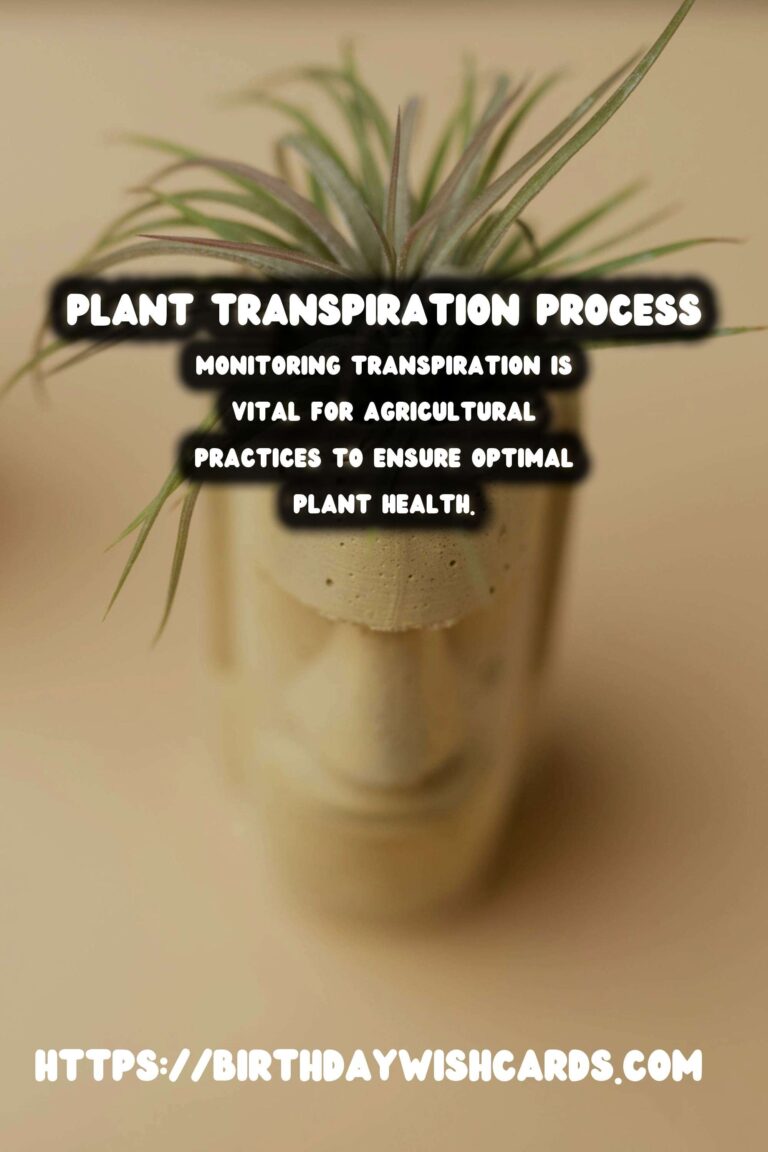
Plant transpiration is a vital process within the broader water cycle that significantly impacts both plant health and the environment. In this article, we delve into the intricacies of plant transpiration, its role in the water cycle, and its importance for maintaining ecological balance.
What is Plant Transpiration?
Plant transpiration is the process by which moisture is carried through plants from roots to small pores on the underside of leaves, where it changes to vapor and is released into the atmosphere. This process is essential for the movement of water within the plant and is a key component of the water cycle.
Transpiration serves several functions within the plant: it helps to cool the plant through evaporation, it aids in the uptake and transport of mineral nutrients from the soil, and it maintains the flow of water from the roots to the leaves.
The Role of Transpiration in the Water Cycle
Transpiration is a crucial part of the water cycle, contributing to the hydrological cycle by returning water vapor back into the atmosphere. This vapor eventually forms clouds that precipitate as rain, replenishing the earth’s freshwater resources.
Approximately 10% of the moisture in the atmosphere is released by plants through transpiration. This continuous cycle of water movement is vital for sustaining life on Earth, as it supports both plant and animal life by maintaining the balance of ecosystems.
Factors Affecting Transpiration
Several factors can influence the rate of transpiration in plants, including environmental conditions such as temperature, humidity, wind, and light. Higher temperatures and wind speeds can increase the rate of transpiration, while higher humidity levels can decrease it.
Additionally, the type of plant and its structural adaptations, such as the number and size of stomata, also play significant roles in determining transpiration rates. Plants have evolved various mechanisms to regulate their water loss, which is crucial for their survival in different climates.
Transpiration and Plant Health
Transpiration is essential for maintaining plant health as it helps in nutrient uptake and temperature regulation. However, excessive transpiration can lead to water loss and dehydration, particularly in arid environments where water conservation is crucial for survival.
Farmers and gardeners often monitor transpiration rates to ensure that plants receive adequate water without over-irrigating, which can lead to water wastage and soil erosion.
The Environmental Impact of Transpiration
Transpiration plays a significant role in climate regulation by influencing local and global water cycles. It helps in maintaining atmospheric moisture levels, which in turn affects weather patterns and climate stability.
Forests and large plant populations are particularly important as they contribute significantly to the earth’s transpiration rates, helping to sustain biodiversity and climatic conditions.
Conclusion: The Importance of Understanding Transpiration
Understanding plant transpiration is crucial for appreciating its role in the water cycle and its impact on both plant health and the environment. By studying this process, we can make informed decisions in agriculture, conservation, and climate science to better manage water resources and sustain ecological balance.
Plant transpiration is essential for both plant health and the broader water cycle. Transpiration helps cool plants, aids nutrient uptake, and maintains water flow. It contributes significantly to the hydrological cycle by releasing water vapor into the atmosphere. Factors like temperature, humidity, and wind influence transpiration rates. Monitoring transpiration is vital for agricultural practices to ensure optimal plant health. Forests contribute greatly to global transpiration rates, affecting climate and biodiversity. 









#PlantTranspiration #WaterCycle #EnvironmentalScience #Ecology #Botany




